#African architecture
Explore tagged Tumblr posts
Text

20250305: Design Inspo
#design#daily inspo#architecture#style#art#furniture#digital art#decor#design inspo#home decor#black art#african art#caribbean art#architecture design#furniture design#graphic design#fashion design
6 notes
·
View notes
Text
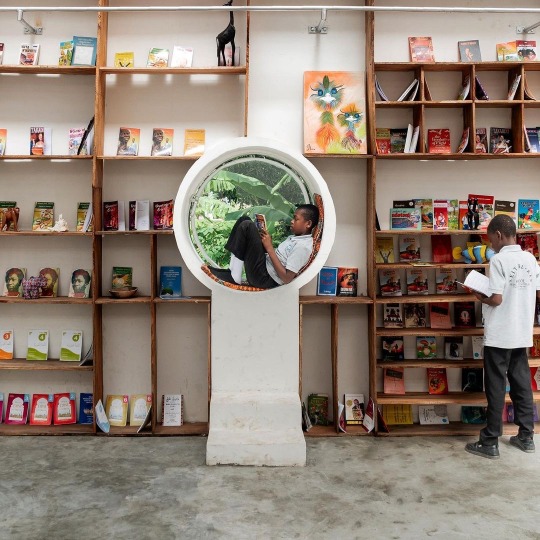

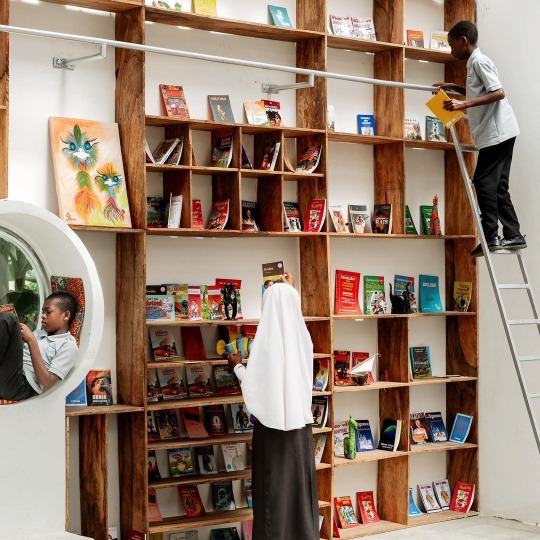
Mariam's Library in Tanzania, Zanzibar by Nassor Othman
#Tanzania#Zanzibar#Africa#African architecture#architecture#Mariam’s Library#Nassor Othman#Parallel Studio
4K notes
·
View notes
Text


During the 1960s numerous subsaharan African countries gained independence from their colonial rule, a process that put an end to a grim period of history during which European rulers conquered and subjugated African peoples and tribes. But the African independence movement not only shook off the shackles of foreign rule but also initiated a boom in modern architecture that has gone largely unnoticed outside of Africa: as a sign of modernization and ambition conference centers, administrative buildings, universities, high rises and luxury hotels were erected, predominantly as concrete constructions and under the aegis of European architects. The employment of the latter obviously came at the expense of local building traditions and techniques but at least local climate conditions were accounted for, a concession that resulted in expressive details and unusual forms.
Over time these buildings have nonetheless fallen into disrepair and often lost their initial purpose. Against this background and in view of their obscurity beyond Africa the architect Manuel Herz at the ETH Zurich initiated a research project focused on Ghana, Senegal, Cote d’Ivoire, Kenya and Zambia. The result is the monumental compendium „African Modernism: The Architecture of Independence“, originally published in 2015 by Park Books and presented here in its second edition from 2022. On 640 pages the volume documents a stunning selection of buildings, cities and architects that are expertly captured by photographers Iwan Baan and Alexia Webster. In an unconventional move they go beyond the purely architectural documentation and also take into account the everyday life and hence demonstrate the lively goings-on in and around the buildings.
In light of these qualities the present volume is a highly recommended opportunity to get familiar with African post-independence architecture and hopefully only the starting point for increased interest and research into the architecture of the continent.
214 notes
·
View notes
Text
i'm gonna go on a whole tangent on this.
i've seen this post going around and i've always avoided liking it or commenting cause honestly, this post is bits of INNACURACY and doesn't even begin to show the beauty of African culture.
i live in Africa [looking at you comments about Africans having 'spotty wifi' and 'not a lot of Africans have tumblr' (this was in 2017 and i've been on tumblr since 2015 :D!)] - not going to mention where specifically. [ik these comments are from 2017 but trust me, sometimes you can still get comments like these today. lmfao]
but i firstly want to start of with: there is NO SUCH PLACE CALLED MAKO. there is however, an informal settlement called Makoko (found in Lagos, Nigeria.) and it looks nothing like pictured above.
secondly, i'm seeing a whole lot of idiotic comments like "what's the wood for?" and honestly, a minute of thinking would answer your questions - this is me saying stop being such assholes about another country's infrastructure regardless of the damn materials they use.
bamboo and/or timber -The wooden poles in the structures form Burkina Faso and Mali are essentially permanent scaffolding
thatch, woven grass, reed walls - allows easy ventilation
mud - ENVIRONMENTALLY FRIENDLY, inexpensive.
the third image in the post is terribly lackluster of you cause that shot sucks and doesn't even capture how amazing it is. that mosque in Burkina Faso is called: The Grand Mosque of Bobo-Dioulasso
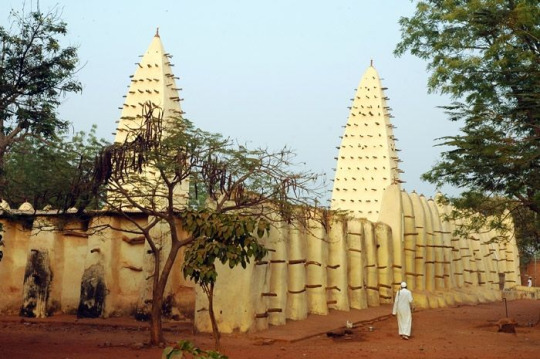
lastly, there are 54 COUNTRIES in Africa.
this only touches like, two. and i know because this post is from 2017 possibly the photos available then aren't like today thus i'm gonna just yeet them below :D.
Painted Gurunsi houses of Tiébélé — Burkina Faso
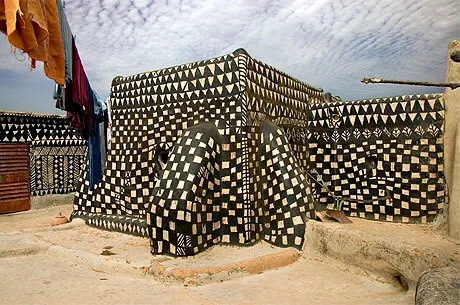
Beehive huts — Eswatini
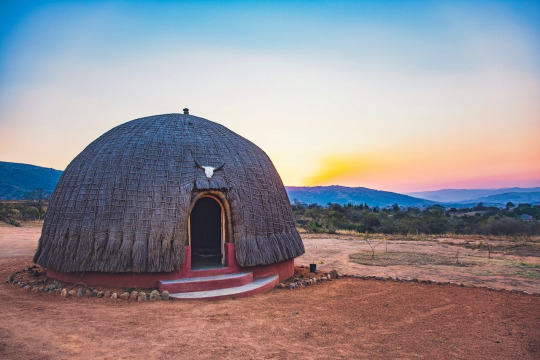
African Heritage House — Kenya
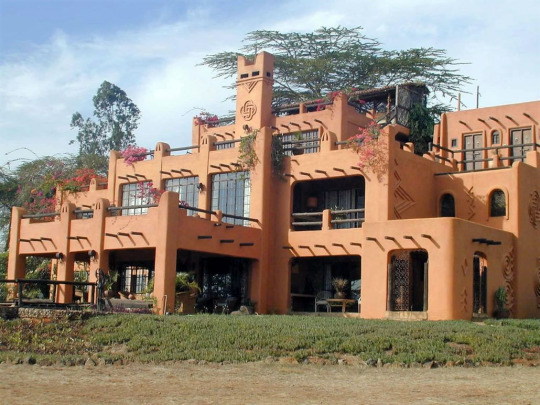
Mua Mission — Malawi
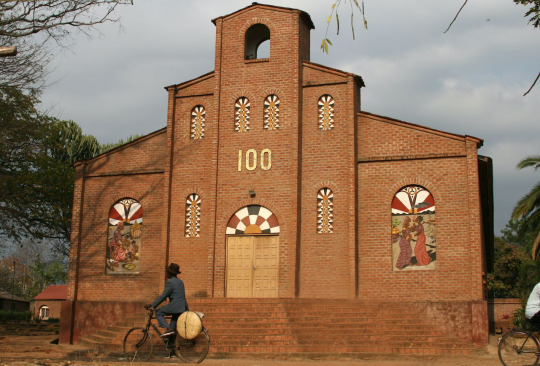
Great Mosque of Djenné — Mali
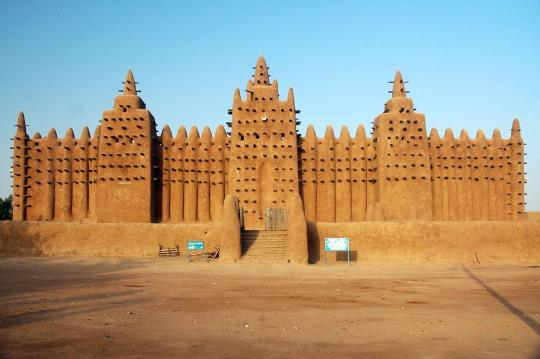
Stone Tower of Chinguetti — Mauritania
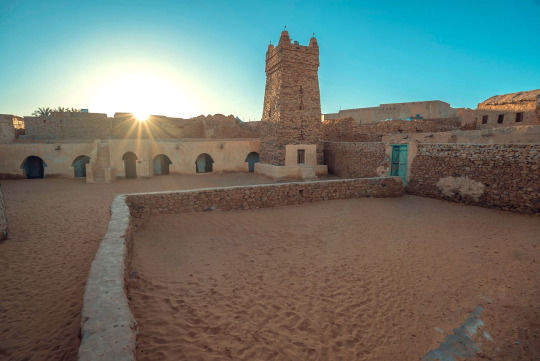
Bab Mansour Laleuj — Morocco
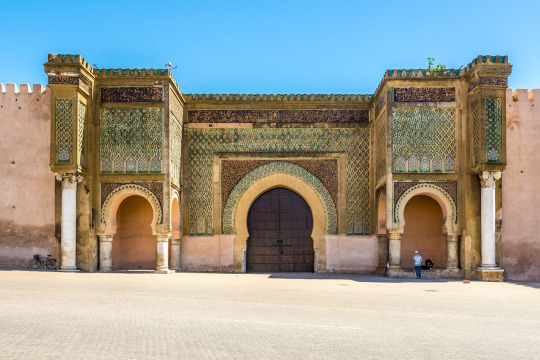
King’s Palace — Rwanda
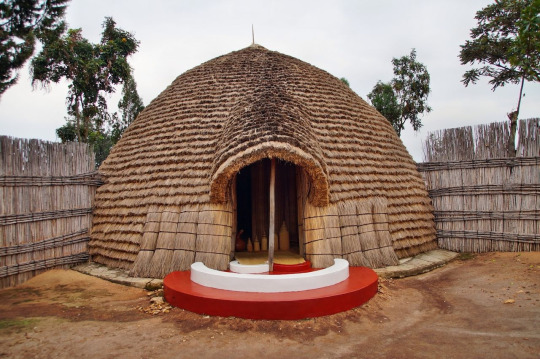
Meroë pyramids — Sudan
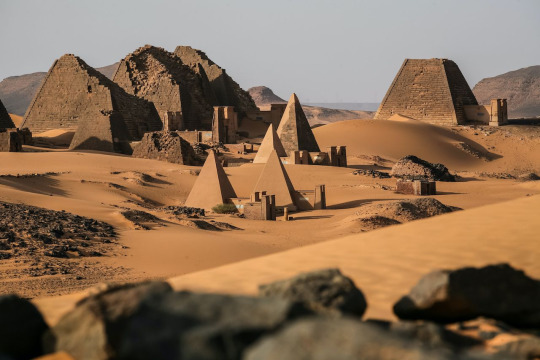
*YEAH THEY'RE PYRAMIDS IN SUDAN TOO.
Clay Palace of Ghardaïa — Algeria
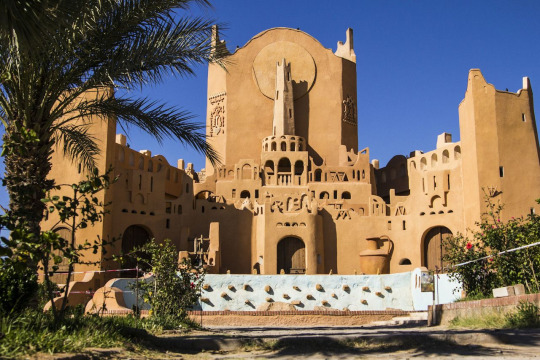
there's obviously wayy more but these are the ones i remember at the top of my head. i didn't see anyone adding anything else so i feel obligated to lol.
some really beautiful african architecture because honestly this site is so western-centric
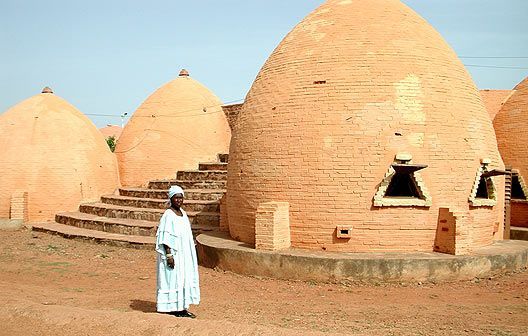
mako

unknown
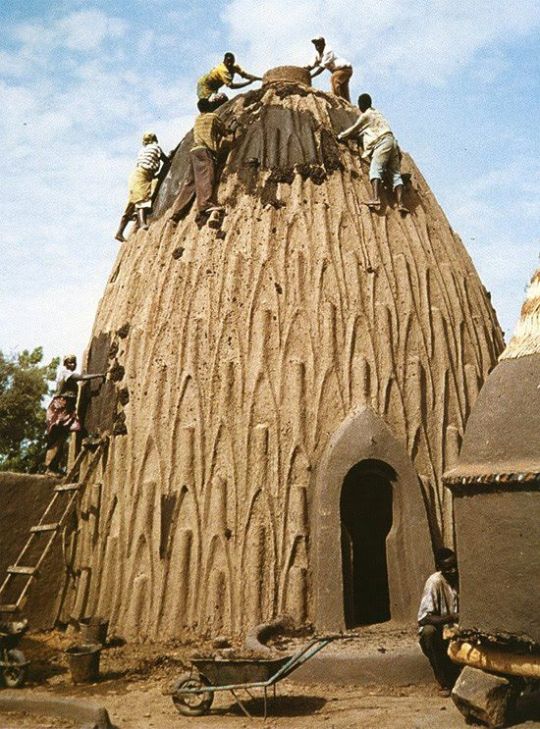
cameroon
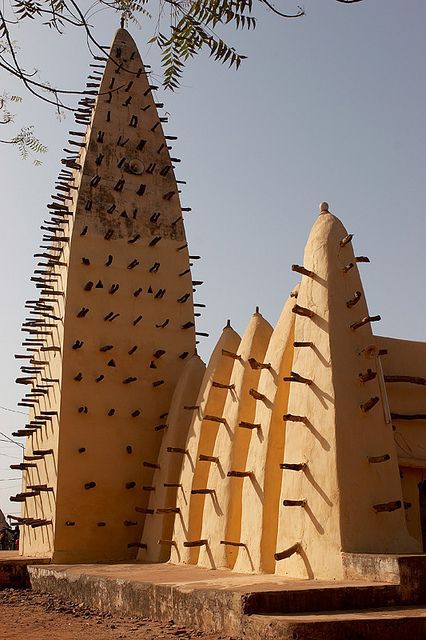
burkina faso
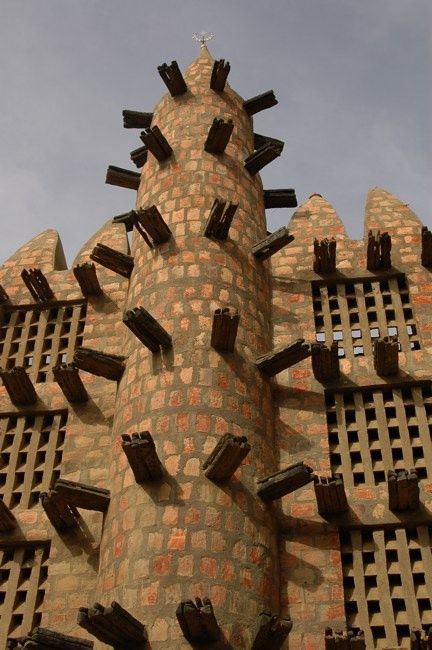
mali

Ndebele
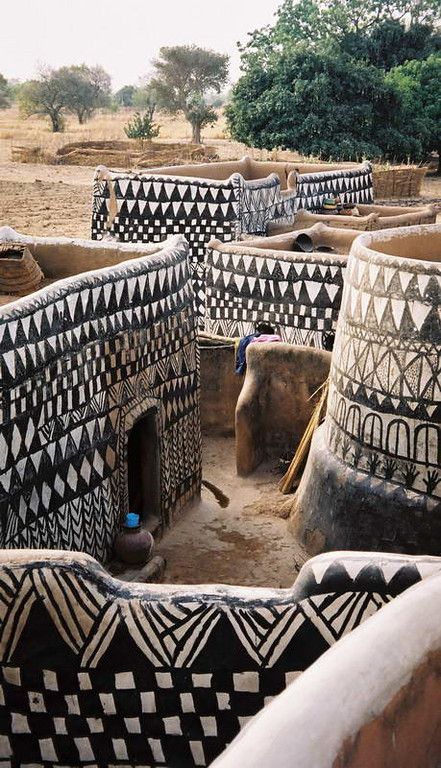
burkina faso
please add more if you can!
#africa#african architecture#fix-it post ig??#i started writing this way back in July lol#tag: seis.tho(ugh)ts
271K notes
·
View notes
Text







Ogbojo House, Accra, Ghana - DeRoché Strohmayer
#DeRoché Strohmayer#architecture#design#building#modern architecture#interiors#minimal#house#concrete#house design#contemporary architecture#modern home#courtyard#garden#columns#brutalist#texture#earthy#plaster#accra ghana#ghana#africa#african architecture#cool homes#urban#light and shadow#cool design#elegant#design blog#architectural photography
112 notes
·
View notes
Text


Villa Aram
Located in Ngaparou
Designed by Cyrus Ardalan✨
#aesthetic#architecture#design#interior design#african architecture#senegal#ngaparou#black girl aesthetic#interior decorating#interiors#home interior#interiorinspo
29 notes
·
View notes
Text


#photography#canon photography#street photography#photographer on tumblr#photographers on tumblr#photography on tumblr#black and white photography#original photography on tumblr#washington dc#bw photography#bw#bwphotography#black and white#monochrome#DC#museum#african history#modern architecture#architecture photography#architecturephotography#architecture#dc architecture
17 notes
·
View notes
Text



The Kingdom of Axum (Aksumite Empire): An In-Depth Analysis of Africa’s Lost Superpower
Introduction: Axum – The Forgotten African Empire
The Kingdom of Axum (Aksumite Empire) was one of the greatest African civilizations, yet its history remains largely unknown to many. Located in what is now modern-day Ethiopia and Eritrea, Axum flourished between 100 BCE and 940 CE, becoming a powerful empire that dominated trade, politics, and culture in Africa, the Middle East, and the Mediterranean.
Axum was more than just a kingdom—it was a global superpower, rivalling the Roman Empire and the Persian Empire. It was one of the earliest African civilizations to develop advanced trade networks, coinage systems, and monumental architecture.
From a Garveyite perspective, the study of Axum is crucial because it proves that:
Black civilization existed at the highest levels long before European colonialism.
African nations were dominant players in global trade, economy, and military power.
Black leadership and governance were sophisticated and independent, not reliant on foreign intervention.
By reclaiming the history of Axum, Black people today can understand that our ancestors were not just victims of history—we were rulers, builders, and strategists.
1. The Origins of Axum: The Birth of an African Empire
A. Geographic and Strategic Location
Axum was located in the Horn of Africa, controlling trade routes between Africa, the Arabian Peninsula, and the Indian Ocean.
It was surrounded by the Red Sea, the Nile River, and the highlands of Ethiopia, making it a natural hub for commerce and military defense.
Its fertile lands allowed for agriculture, livestock farming, and gold mining, ensuring a strong economy.
Example: The Ethiopian Highlands provided Axum with a natural fortress, making it difficult for invaders to conquer.
Key Takeaway: Axum was not an isolated kingdom—it was a central force in African and world history.
2. The Rise of Axum as a Global Trade Power
A. Axum’s Control Over International Trade
Axum controlled Red Sea trade routes, connecting Africa with the Middle East, India, and the Mediterranean.
It became one of the world’s first major exporters of gold, ivory, frankincense, myrrh, and exotic animals.
Axumite merchants traded with the Romans, Persians, Indians, and Arabs, making Axum one of the wealthiest states of its time.
Example: Roman and Greek historians described Axum as one of the four great world powers, alongside Rome, Persia, and China.
Key Takeaway: Black civilizations were not just local powers—they influenced global commerce and trade.
B. The Axumite Coinage System: Africa’s Early Banking System
Axum was one of the first African kingdoms to mint its own coins (gold, silver, and bronze).
These coins were used in trade with the Roman Empire, Arabia, and India, proving Axum’s economic dominance.
The coins often featured the images of Axumite kings, showcasing Black leadership and national identity.
Example: Axumite coins were found as far away as India and China, proving that African goods and culture travelled across the world.
Key Takeaway: Africa had a sophisticated economic system long before European colonization.
3. Axum’s Architectural and Cultural Achievements
A. The Obelisks of Axum: Africa’s Forgotten Monuments
Axum is home to some of the tallest ancient obelisks in the world, serving as monuments to Axumite kings.
These structures, carved from single blocks of granite, are over 100 feet tall and demonstrate advanced engineering skills.
The obelisks were used as royal tomb markers, showing the kingdom’s rich burial traditions.
Example: The Obelisk of Axum, stolen by Italy during its invasion in the 20th century, was only recently returned in 2005.
Key Takeaway: Black civilizations built monumental structures that rivalled those of Egypt and Rome.
B. The Architecture of Axumite Palaces and Temples
Axumite kings built grand palaces, temples, and underground tombs, many of which still stand today.
The city of Axum itself was a vast metropolis, filled with markets, administrative buildings, and places of worship.
Example: The Dungur Palace, often called the "Palace of the Queen of Sheba," is a massive Axumite structure showcasing the empire’s architectural brilliance.
Key Takeaway: Africa was home to urban centres and royal capitals long before European cities reached similar levels of sophistication.
4. The Religious Transformation of Axum
A. Axum’s Conversion to Christianity
Axum was one of the first major African states to convert to Christianity around 330 CE, under King Ezana.
Christianity became the official state religion, leading to the construction of churches, monasteries, and religious texts.
The Ethiopian Orthodox Church, which traces its origins to Axum, remains one of the oldest Christian institutions in the world.
Example: The Church of St. Mary of Zion in Axum is believed to house the Ark of the Covenant, one of the most sacred relics in biblical history.
Key Takeaway: Christianity in Africa did not come from European missionaries—it was practised in Axum over 1,000 years before colonialism.
B. The Role of Axum in Early Islam
When Prophet Muhammad and his followers were persecuted in Mecca, they fled to Axum for protection.
The Axumite king, Negus (King Armah), granted them asylum, making Axum one of the first nations to support Islam.
Despite being a Christian empire, Axum maintained peaceful relations with early Muslims.
Example: Islamic tradition refers to King Negus as a righteous ruler, proving Axum’s influence in world religions.
Key Takeaway: Africa was a centre of religious and spiritual movements, shaping both Christianity and Islam.
5. The Decline and Legacy of Axum
A. Why Did Axum Fall?
Over time, Axum faced challenges such as:
Overuse of resources and deforestation.
Trade competition from rival states like Persia and the Byzantine Empire.
Invasions from Muslim armies and internal conflicts.
By the 10th century CE, Axum declined and was eventually replaced by the Zagwe Dynasty and later the Ethiopian Empire.
Example: Many Axumite traditions were carried on by Ethiopia, which remained one of the few African nations never fully colonized.
Key Takeaway: African civilizations did not simply "vanish"—their traditions and legacies were passed down to future generations.
6. The Garveyite Vision: Lessons from Axum for Today
Axum proves that Africa was a centre of global trade, wealth, and innovation.
Black nations today must rebuild economic self-sufficiency, just as Axum controlled trade.
African unity is possible—Axum ruled multiple regions and maintained strong leadership.
Religious institutions must serve Black self-determination, as Axum used Christianity to strengthen its empire.
Final Thought: Will We Restore Africa’s Greatness?
Marcus Garvey believed that:
“Africa for the Africans, at home and abroad!”
Will Black people continue to depend on foreign nations, or will we reclaim our economic and political power?
Will we rebuild African empires, or continue to suffer under neocolonialism?
The Choice is Ours. The Time is Now.
#blog#black history#black people#blacktumblr#black tumblr#black#black conscious#pan africanism#africa#black power#black empowering#african kingdom#AksumiteEmpire#black excellence#ReclaimOurHistory#Garveyism#marcus garvey
35 notes
·
View notes
Text

The Goundam-Tokossel Mosque, located in the town of Goundam, Mali, stands as a testament to the rich history and diverse cultural heritage of the region. This historic mosque holds a special place in the hearts of the locals and serves as a focal point for the community.
16 notes
·
View notes
Text

5 notes
·
View notes
Text




The Woman King palace inspired by Dahomey Kingdom architecture and design.
#diasporicobjects
5 notes
·
View notes
Text
Sapiens: A Brief History of Humankind
How studying the past can guide the future of design for black urbanisation

Design is about solving problems through the process of analysis, and ultimately coming up with a concept or solution for said problem and presenting the idea. There has been a question that has been plaguing my mind for a few years now and that question stems from my studies of architecture and urban planning, it is 'What does a utopian black society look like?' I was trying to conceptualise the perfect world in which Black people and people of African decent would thrive in. This question came about because ultimately I studied architecture in order to learn how great cities are built, and what I've always been taught has always come from the viewpoint of western civilization. All the 'great' Architects and thought leaders in Architecture, Urban Planning are white or Asian and more often than not men. In all my studies there wasn't anything that I learned that was taken from black or African culture and to be fair, African cities have a lot of deeply fundamental problems that they are facing with many dealing with overpopulation, informal settlements, lack of planning, poor drainage system, inadequate roads and transport infrastructure... I could honestly go on. Strides are being made to develop African cities but things are still a long way for a majority of major African cities to be called anything even close to a utopia. I sat down and wondered why that was the case and even tried to conceptualise my own vision of what the ultimate utopian African civilization could look like and function like, but I couldn't even allow my mind to go that far with my thoughts because even if said utopian society was created, 'the perfect African city' there are so many foundational fundamental ills within black society that must first be addressed before a perfect city can be created. Because lets say the perfect African city is created, how long before corruption starts to seep in by it's leadership? how long before the roads start being ill maintained? before informal selling of goods on the side of roads starts happening? before gang violence, crime and drugs start to destroy the community. It sounds very cynical and almost even racist to start saying some of these things, but I believe it's the very fact that these issues are not being addressed openly and honestly in the black community that they stay being problems.
Now, what does this have to do with the book Sapiens? There is no easy way to say this but black society is highly dysfunctional and there are many reasons we can delve into as to why and how that is the case, but ultimately surely a black utopian society would be one that would combat those ills and challenges faced by black citizens of the world. And when I say black, I refer to all black and African people of the world, on the continent of Africa, in the Carribean, America's and all over the diaspora. Regardless of where black people congregate, the same patterns emerge within their societies: poor living conditions, corruption, violence, substance abuse, crime, poor leadership and governance, greed. A lot of African's are trying hard to escape the realities of these ills in their community and more often than not through any means necessary. Huge strides have been made in things like access to education and infrastructure development etc but the fight is still very far from over and I believe it is through tackling those deep fundamental ills that are plaguing black society through which we can even begin to start creating black utopian cities. But HOW? did black society come to be the way it is? And that is how I ultimately came to read Sapiens because before I could even begin to tackle and breakdown and understand how colonialism impacted black society, I felt like I had to understand the story of how western civilization and it's systems even came to be in the first place, and Yuval Noah Harari's historical breakdown of human civilization actually takes it all the way back to the first peoples, homo erectus, neaderthals...etc all the way down to modern systems like capitalism and their impact on today's world.
Now, I would hardly call Sapiens brief, but if you consider it with the context of the story of how human society as we know it came to be, I would say that Yuval Noel Harari did a wonderful job at really breaking down the key events throughout the history of the civilisation of man that has shaped where we are today.
I know this blog is mostly about architecture, design, urbanism, art and creativity in general, and more especially within the confines of the black/African experience, so Sapiens seems a bit out of context to be talking about on this blog - but someone said something on X (formerly know as Twitter, Twitter to the ones who know) that has not left my mind, and I find that I get the most out of writing when I’m analysing something that I’m already thinking about, but the thing that the person said was that they didn’t understand racism and that when the Tower of Babel happened it brought in racism. And when I read that I knew that this work that I'm doing is very important because it's tackling very deep and fundamental problems that hold black society back from ultimately prospering, and that is my goal in this life, to see the upliftment of black people and elevate suffering and poverty from black communities and no longer let that be our story or our defining factor. So back to the person who said that they didn't understand racism and linked it to a biblical story. That right there is already one of the foundational problems that black people suffer from, not understanding history and how actually intentional and systemic racism is, and how it has been woven into mainstream culture over hundreds of years. And that's why I believe Sapiens is such a fundamental book for Africans and black people to read, in order to understand where they stand within the context of modern-day civilization. But one cannot understand where they are now, without understanding the past. And the problem with the past is actually such deeply fundamental crux within black society, and more especially if you are a Bible believing Black or any type of black person that subscribes to any of the Abrahamic religions, which is indeed, most black people, including myself. There is the ongoing debate of God vs Evolution and if you are a good chrsitian, you do not believe in evolution. You believe in the biblical account of creation of how man came to be. And that was the case for me. I never engaged at all with anything to do with evolution, I understood that it was the scientific belief of how man came to be, and learned about it in school but beyond that I never subscribed to it as my belief system because I felt that if I believed in evolution, that meant then that I don't believe the Bible. And judging by what my friend tweeted about the Tower of Babel and how it is linked to racism. I truly believe that this is the thinking and the mindset for a lot of African people.
Colonialism did a lot of damage to black society, but none as impactful as what Christianity and Religiousness has done to the black society, and this I say as a God fearing Bible believing woman. Because African and Black society is so rooted in Faith in God, they fail to critically analyze the world at large around them, because their full and entire reliance is on God. And there is nothing wrong with praying, but they spend more time praying for things to change as opposed to working towards changing things that are within their power to change. They pray for a better quality of life but do not invest in schools, education, infrastructure, healthcare etc. Too much reliance is placed on having faith, but having the faith to ACT on the things they believe their world should be lacks. They believe there shouldn't be sickness, and yet, they don't work to improve healthcare infrastructure, they believe they should have wealth and prosperity but don't work on creating and developing industry in their own communities, they believe that crime, gang violence and substance abuse shouldn't have a place in their society but make no efforts to improve law enforcement or criminal rehabilitation in their communities. Ultimately you can get down on your hands and knees and pray everyday for things to change, but at the same time, if you do not use those same hands and feet that God gave you, that you use to pray with, to stand up and build, there will not be a safe space and utopia for black citizens to thrive in. I love the book Sapiens so deeply because for the first time in my life, it truly made me engage with evolution and the idea of a 'master race' etc. It made me genuinely critically analyze very certain deep and fundamental beliefs I had about myself and my faith and black society etc. It made me engage with history, and even my own beliefs about my own history from a very different viewpoint, and it's honestly been one of the most life-changing and paradigm shifting books I've ever read. And even especially as a designer, because ultimately the role of the architect and designer is to serve the needs of people, but in order to serve people and design for people you must understand people. And understanding the history of human kind from this perspective has helped me to gain new insight into certain motivations behind certain systems that are in place that exist, like racism. And so by understanding how certain ills came to be, it can be the first steps in pathologozing black society and ultimately finding the solutions needed to cure the ills in the black community. And so, just as I recommended to my friend, I recommend you read Sapiens as an architect, urban planner or designer. There's much more reading I'll be doing and I'll be sharing my thoughts and ideas as I encounter them. But Sapiens for me was one of the best books I've ever read and I highly recommend it, for anyone who has any pressing questions about our human civilization and how we got to where we are now.
You can listen to this very interesting conversation on the What Now Podcast with Trevor Noah, between Trevor and Yuval Noah Harari. A very great episode and my favorite podcast!
youtube
#architecture#design#art#inspiration#african#life#creativity#africa#reading#books and reading#education#black architect#black culture#african architecture#african culture#Youtube
2 notes
·
View notes
Text







Sacred Heart Cathedral of Kericho, Kenya - John McAslan & Partners
#John McAslan#architecture#design#building#modern architecture#interiors#minimal#concrete#modern#contemporary#contemporary architecture#church#modern church#church building#church architecture#religious architecture#cool architecture#beautiful buildings#beautiful design#light and shadow#colour#timber#wood interior#concrete structures#kenya#africa#african architecture#british architecture#design blog
34 notes
·
View notes
Text
A Tuareg Village Tents in the Ubari Lakes Area
A Tuareg village can be found in the stunning Ubari Lakes area of the Sahara Desert in Libya. The Tuareg people are semi-nomadic herders and traders. They primarily live in Northern Mali. Their presence extends into Niger, Burkina Faso, Algeria, and Libya. They trace their ancestry back to the Berbers of North Africa and speak a Berber language called Tamasheq, often referring to themselves as…
#A Tuareg Village Tents#African architecture#North Africa Architecture#Tuareg#Tuareg History#Ubari Lakes Area
5 notes
·
View notes







